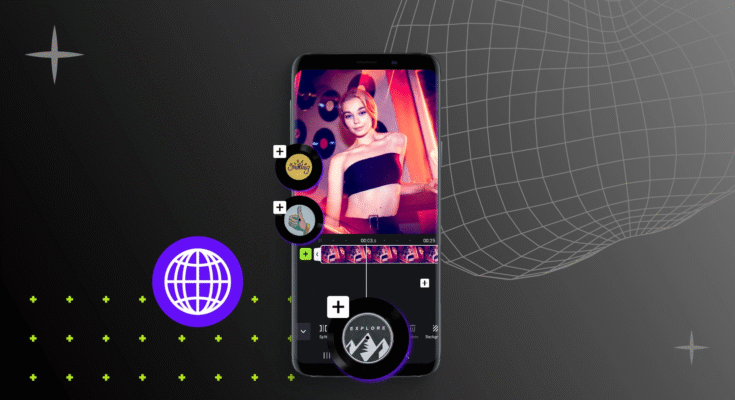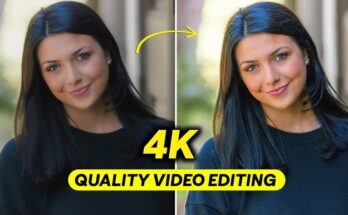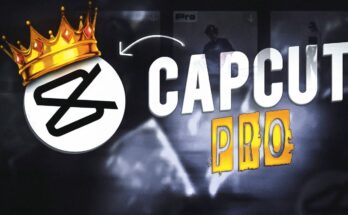Video editing has become an essential skill for content creators, marketers, educators, and hobbyists. While professional software like Adobe Premiere Pro and Final Cut Pro dominate the industry, not everyone can afford their high costs. This is where Shotcut, a free and open-source video editor, comes into play.
Shotcut offers a powerful, feature-rich editing experience without the price tag. In this article, we’ll explore its features, pros and cons, system requirements, and how it compares to other video editors.
What is Shotcut?
Shotcut is a cross-platform, open-source video editor available for Windows, macOS, and Linux. Developed by Dan Dennedy, it was first released in 2011 and has since evolved into a reliable tool for both beginners and intermediate users.
Unlike many free editors, Shotcut doesn’t impose watermarks or restrict exports, making it an excellent choice for those who need professional-quality results without paying for software.
Key Features of Shotcut
1. Cross-Platform Compatibility
Shotcut runs on:
-
Windows (7, 8, 10, 11)
-
macOS (10.14 and later)
-
Linux (various distributions)
This makes it accessible to a wide range of users, regardless of their operating system.
2. Wide Format Support
Shotcut supports a vast array of video, audio, and image formats, including:
-
Video: MP4, MOV, AVI, MKV, WebM, and more
-
Audio: MP3, WAV, FLAC, AAC, OGG
-
Image: PNG, JPG, BMP, SVG
It also supports 4K resolution and high frame rates, making it suitable for high-quality projects.
3. No Watermarks or Export Limits
Unlike many free editors (such as some freemium apps), Shotcut allows unlimited exports in full quality without watermarks.
4. Advanced Editing Tools
-
Timeline Editing: Multi-track timeline for precise cuts, transitions, and layering.
-
Keyframe Animation: Customize effects, opacity, and motion over time.
-
Color Grading & Filters: Adjust brightness, contrast, saturation, and apply LUTs (Look-Up Tables) for cinematic looks.
-
Audio Editing: Mix tracks, apply filters (EQ, noise reduction), and adjust volume levels.
5. Hardware Acceleration
Shotcut supports GPU acceleration (via OpenGL), improving performance when rendering high-resolution videos.
6. Customizable Interface
Users can rearrange panels, detach windows, and switch between Light and Dark themes for better workflow.
7. Built-in Effects & Transitions
-
Video Effects: Blur, chroma key (green screen), glitch, vintage film, and more.
-
Transitions: Fade, wipe, slide, and dissolve effects.
8. Proxy Editing
For smoother editing of high-resolution files, Shotcut allows proxy editing, where lower-resolution copies are used during editing to reduce lag.
9. Streaming & Capture Support
Shotcut can capture video from webcams, IP cameras, and screen recordings, making it useful for live streaming setups.
Pros and Cons of Shotcut
Pros:
✅ Completely free & open-source (no hidden costs)
✅ No watermarks or export restrictions
✅ Supports 4K and high frame rates
✅ Cross-platform (Windows, macOS, Linux)
✅ Wide format compatibility
✅ Powerful editing tools (keyframes, color grading, etc.)
Cons:
❌ Steeper learning curve for beginners (interface can feel cluttered)
❌ No auto-save feature (users must manually save projects)
❌ Lacks some AI-powered tools (like auto-reframing or smart cut)
❌ Occasional stability issues (may crash with heavy projects)
Shotcut vs. Other Free Video Editors
| Feature | Shotcut | DaVinci Resolve | HitFilm Express | OpenShot |
|---|---|---|---|---|
| Free | ✅ Yes | ✅ Yes (Free) | ✅ Yes (Free) | ✅ Yes |
| Watermark | ❌ No | ❌ No | ✅ (Some exports) | ❌ No |
| 4K Support | ✅ Yes | ✅ Yes | ✅ Yes | ✅ Yes |
| Cross-Platform | ✅ Yes | ✅ Yes (Paid for full macOS) | ✅ Yes | ✅ Yes |
| Advanced Features | ✅ Good | ✅ Excellent | ✅ Good | ✅ Basic |
| Ease of Use | ⭐⭐⭐ | ⭐⭐⭐⭐ | ⭐⭐⭐⭐ | ⭐⭐⭐⭐ |
Verdict:
-
Best for professionals: DaVinci Resolve (but requires a powerful PC)
-
Best for beginners: OpenShot (simpler interface)
-
Best balance of features & freedom: Shotcut
System Requirements
For smooth performance, ensure your system meets these minimum requirements:
-
OS: Windows 7+, macOS 10.14+, or Linux
-
CPU: Intel Core i5 or equivalent
-
RAM: 4GB (8GB recommended for 4K)
-
GPU: OpenGL 2.0 compatible
-
Storage: 500MB for installation (more for project files)
How to Get Started with Shotcut
Step 1: Download & Install
-
Visit the official website:
-
Download the correct version for your OS.
Step 2: Basic Editing Workflow
-
Import Media – Drag and drop files into the playlist.
-
Add to Timeline – Drag clips to the timeline for editing.
-
Cut & Trim – Use the razor tool to split clips.
-
Add Transitions – Drag effects between clips.
-
Apply Filters – Adjust colors, add text, or apply effects.
-
Export Video – Choose format (MP4 recommended) and resolution.
Step 3: Advanced Tips
-
Use keyframes for smooth animations.
-
Enable proxy editing for better performance.
-
Experiment with LUTs for cinematic color grading.
Conclusion: Is Shotcut Worth It?
Yes! Shotcut is an excellent choice for:
-
Budget-conscious editors who want professional features for free.
-
Linux users (few high-quality free editors are available for Linux).
-
Intermediate users who need advanced tools without subscription fees.
While it may not be as polished as paid alternatives, its flexibility, zero cost, and powerful capabilities make it a top contender in the free video editing space.
If you’re looking for a no-strings-attached editor that can handle everything from simple cuts to advanced projects, Shotcut is definitely worth trying!




